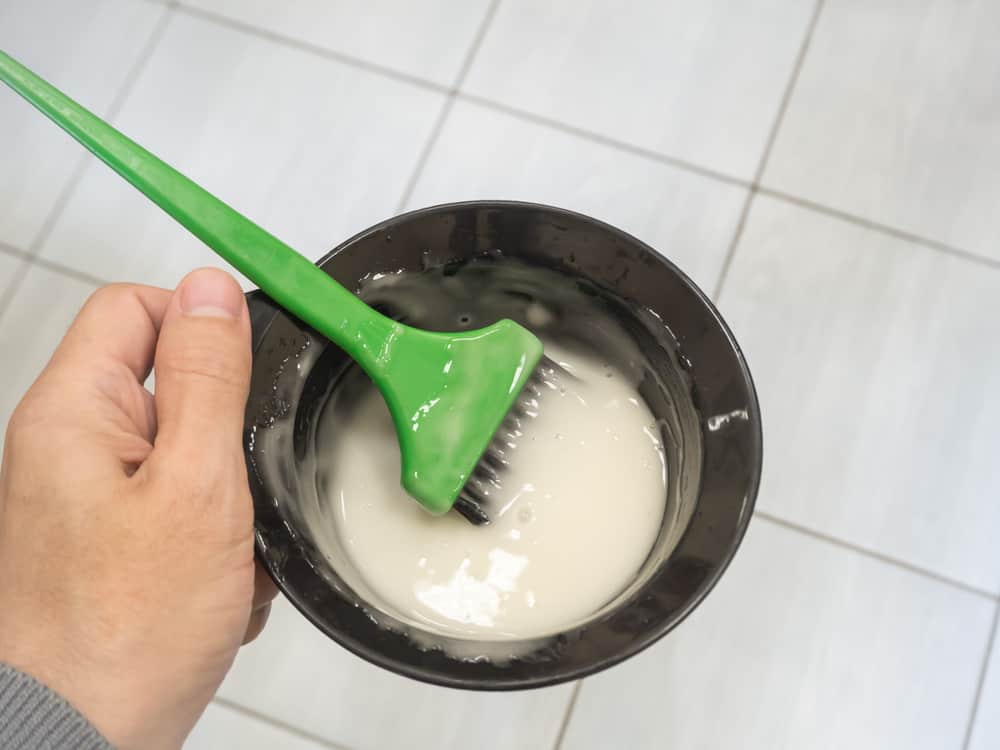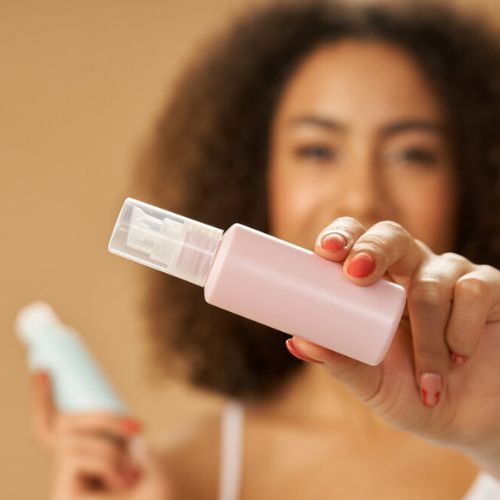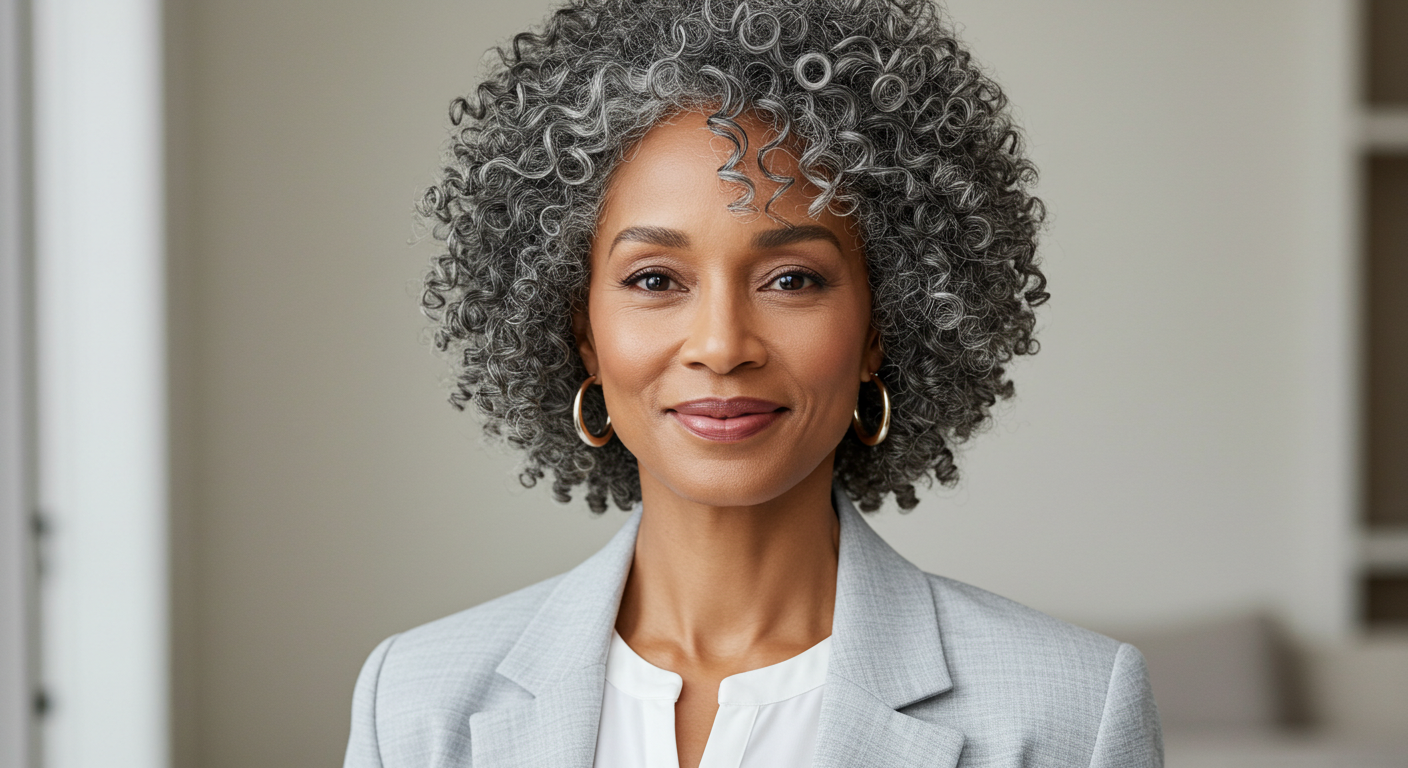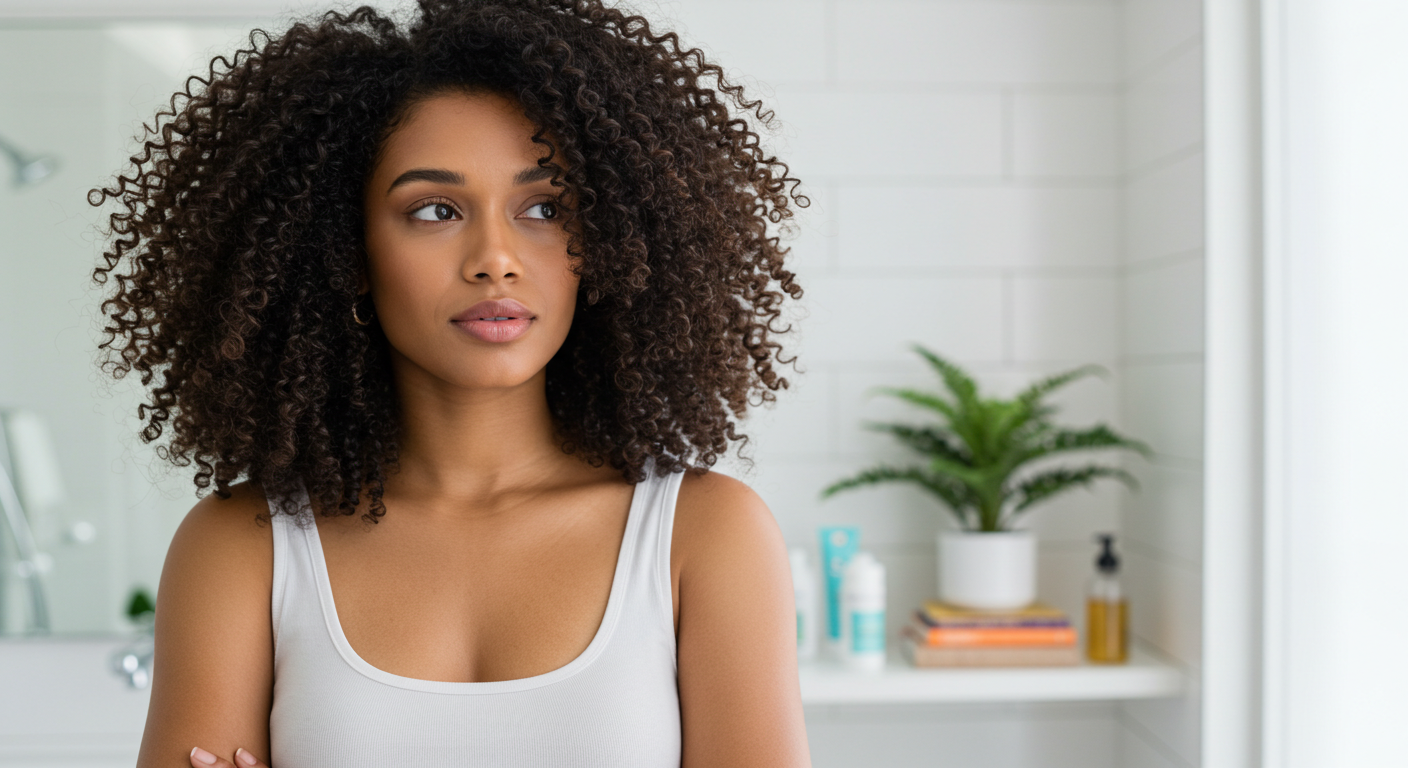Fact Checked & Reviewed By Leonela Paladino
Leo has more than 17 years of valuable experience as a researcher and lecturer in Biology and Genetics. Holding a PhD in Biology…
The process of bleaching hair is a scientific one. It alters the structure of your hair and requires you to change your hair care regimen. Caring for bleached hair, whether it’s straight hair, wavy hair, or curly hair, requires intensive moisturizing treatments. You must know the steps to take to keep your hair in good condition before committing to bleaching.
Bleaching involves lightening the hair using an alkaline and oxidation process. Hydrogen peroxide is often used as an oxidation agent and is left on the hair for about twenty minutes before being washed off. Preserve your bleached color using purple shampoo, protective spray, protein treatments, and hair masks.
In my own journey of maintaining healthy hair for the past 7 years, I’ve ventured into bleaching quite a bit. While some outcomes were fantastic, there were instances where my curly hair suffered severe damage, leading to significant hair loss.
With my personal experience, coupled with insights from my hair scientist friend—an expert in the field—we’re collectively sharing the importance of thoughtful care for bleached hair.
How to Restore and Preserve Your Curls After Bleaching

If you’re considering bleaching your hair, it’s crucial to comprehend the processes it has undergone and prioritize its care afterward.
The best way to effectively care for your hair at home and ensure it maintains its best appearance is by combining preservation and restoration techniques.
Restoring Hair Quality after Bleaching
To counteract the adverse effects of bleach, consider the following restoration steps:
- Gentle Cleansing:
- Use a mild sulfate-free shampoo to cleanse hair fibers gently.1 Avoid using extremely hot water when washing, as this can further damage your hair’s structure. Also, avoid scrubbing your hair aggressively.2 Pro tip: I like to rinse my hair with cold water as it helps enhance the shine.
- Always apply a hair conditioner after washing.2,3
- Use a leave-in conditioner for added moisture and protection from the elements.4
- Ingredients in Restoration Products:
- Limitations of Restoration Products:
- While these products cannot fully reverse the damage, they significantly improve hair condition and manageability.2
- Mechanical Benefits:
- Bleaching increases the hair’s porosity and pore size.9 The increased hair porosity is addressed by conditioning actives and restoring mechanical strength.
- It enhances hair shine and aligns cuticles, resulting in smooth, shiny, and healthy hair.2
Preserving Your Bleached Hair
Hair bleach can significantly impact hair in both good and bad ways. When restoring or preserving the integrity of blond hair, finding a balance between moisture and protein is essential. Maintain your newly bleached color by following these Do’s and Don’ts:
Do:
– Use a purple shampoo to counteract any yellow tones. (Wait about two weeks before adding this to your care routine).
– Use a leave-in conditioner.
– Use a color-preserving shampoo and conditioner.
– Use hair masks/deep conditioners regularly.
– Use heat-protectant products if or when styling your hair.
– Avoid excessive sun and heat exposure.
Don’t:
– Wash your hair immediately after bleaching.
– Bleach your hair again soon after bleaching.
– Use harsh shampoos to wash your hair.
– Forget to condition your hair.
– Leave out hair masks and heat protection products.
Hair Bonder and Bond Sustainer
- Employ milder bleaching conditions (i.e. ammonia-free color or Albage) and include hair conditioning or strengthening agents.
- Consider “Hair Bonder” or “Bond Sustainer” products, like Olaplex Hair Protector. These formulations comprise multiple active ingredients that aim to preserve hair fibers’ biological, chemical, and mechanical integrity during chemical treatments. They work simultaneously with hydrogen peroxide to form chemical bonds inside the hair cortex.
Additional Tips for Restoration and Maintenance
- Patience is Key:
- Bleach-damaged hair is often dry and somewhat brittle, and restoring it to its beautiful former glory can take some time.
- Celebrate small wins and maintain a consistent care routine.
- Protein Treatments:
- Integrate protein treatments to rebuild and strengthen damaged hair shafts.6 Protein treatments are available at most beauty supplies and drug stores. Here is a list of my favorite protein treatments.
- Shower Filter:
- Use a shower filter to counter hard water, aiding in managing and preserving bleached hair.10 Here’s the shower filter I love and own.
- Heat Protectant:
- Consider using a heat protectant when diffusing or engaging in heat styling to minimize heat damage and maintain the health of your curls.
- Chelating Shampoo:
- Speaking of countering hard water, incorporate a chelating shampoo monthly to remove build-up from products and minerals in shower water.
- Regular Trimming:
- Schedule regular haircuts to eliminate split or dead ends and maintain overall hair health. Bleach may cause curls to stretch out, causing them to lose their springy form. For that reason, I prefer to have my hair trimmed after the color.
- Hydration and Oiling:
- Keep bleached hair hydrated and minimize the frizz with a deep conditioner at least once or twice weekly. Note: When my hair was severely damaged, deep conditioning twice a week significantly contributed to its restoration. As your hair improves in health, you can gradually reduce the frequency of these sessions.
- Applying oil to bleached hair can help seal in moisture and keep your ends intact. Some oils can penetrate the cuticle and provide optimal care for your bleached hair. Try hair oils, such as coconut or Amla oil, for moisture retention.11,12
- Invest in Silk or Satin Pillowcase:
Remember that the key to maintaining your bleached hair is giving it extra moisture and care.
Understanding the Process of Bleaching Hair

Bleaching is probably one of the most popular hair coloring processes among consumers globally. With only 2% of the world’s population having naturally blonde hair, bleaching is the number one way to lighten hair color and achieve a brighter, more radiant look.14
The word “bleaching” is defined as the lightening of hair color via a chemical process or exposure to sunlight. A combination of alkaline and oxidation processes is used to achieve a bleached hair effect.15,16
The oxidizing agent most commonly used is hydrogen peroxide. The process involves applying an alkaline mixture to open the cuticles of the hair strands. The oxidizing agent is then applied to the hair fibers. It is left to work for 15 to 20 minutes or so.17

The bleach is removed from the hair with warm water. The hair is treated with a clarifying shampoo to rinse away the bleaching chemical.17
Hair bleaching is a complex chemical process that alters the structure and quality of your hair. Once bleached, your hair needs special care due to these changes, and it’s important to note that the bleaching process comes with significant risks. To put it simply, your hair care routine will need to undergo special care once you start bleaching your hair.15
Now, let’s go through the fundamentals of hair bleaching.
The Bleaching Process and Melanin

Hair bleaching is a chemical process that strips or removes the natural color of your hair by eliminating melanin, the pigment responsible for its color.
This change in color is permanent and irreversible. The bleaching process involves opening up the hair cuticle to allow the bleach to reach the cortex, where both the hair cuticle and medulla are located.15,17
Melanin, a microgranular substance found in the cortex of the hair, scatters incoming solar radiation, contributing to the hair’s color. This pigment is produced by specialized cells called melanocytes through a process called melanogenesis.
In hair, there are two types of melanin, each with distinct biosynthesis pathways, characteristics, and colors:
- Eumelanin: Responsible for brown and black colors.
- Pheomelanin: Produces yellow-blond, ginger, and red colors.
A person’s hair color is influenced by the type of melanin present. The interplay of various factors, including the ratio and distribution of melanins, the size of pigment granules, and the melanin quantity within the hair fiber, also contributes. This process varies across different hair types.18
Bleaching with Alkaline

One of the most commonly used chemicals in hair bleaching is alkaline hydrogen peroxide.
However, hydrogen peroxide isn’t stable in high pH conditions, which is why it’s mixed with an alkaline ammonia solution just before application to the hair.
While other alkalizing agents can have similar effects, ammonia is often preferred due to its specific role in the bleaching process.
When mixed with ammonia, the pH of hydrogen peroxide increases, activating it to initiate the chemical reaction.
Upon microscopic examination, it can be observed that both ammonia and hydrogen peroxide penetrate the cuticle, targeting the melanin grains in the cortex.19,20
The alkaline hydrogen peroxide works to break down the melanin grains, solubilizing them at a high pH into smaller, more hydrophilic molecules. These smaller molecules can dissolve in water, and they are then subsequently rinsed off during the process.21
The Aftermath of Bleached Hair

Bleaching hair is a widespread practice globally, yielding stunning results for many. However, it’s crucial to be aware of potential adverse effects before deciding to bleach your hair.
Some adverse effects of bleached hair include:
- Damage to the cuticle and cortex.
- Weakened hair shafts that lead to breakage.
- Dry, brittle, and damaged hair.
- Increased sensitivity to sun and damage.
- Hair that is very porous, weak, and easily damaged.
- The hair shaft is somewhat weakened and easily breaks.
- Hair is dull, drier, and frizzier.
- Hair strength and mechanical integrity are reduced.
- The hair will need to be dyed again to regain the brightness of the original color.
- Split ends are common and hair can become somewhat unmanageable.
It’s important to note that the oxidation process involved in hair bleaching is a harsh chemical process. The high pH hydrogen peroxide can cause significant damage to the hair fibers, leading to increased vulnerability, especially for those with underlying conditions.
When considering the aftermath of bleached hair, understand that your curl pattern may change, there’s a risk of hair breakage and significant hair loss, and the process strips away natural hair oils, leaving your hair more prone to moisture deficiency.2,15,17,21
Now, let’s look at a few essential factors to keep in mind when considering the aftermath of bleached hair.
The Protein Structure Can Become Compromised
Hydrogen peroxide not only bleaches melanin but also oxidizes various protein components within hair keratin.
The backbone of the hair’s mechanical strength relies on disulfide bonds. Hydrogen peroxide targets and breaks these essential chemical linkages, resulting in significant damage, increased porosity, and weakness. This makes the hair prone to easy breakage.
Additionally, the sulfur-containing amino acid cysteine in keratin undergoes oxidation, transforming into cystic acid. This process renders the hair more hydrophilic, allowing bleached hair to absorb more moisture and exhibit frizz compared to unbleached hair.21
Some May Experience Thinning Hair
Thinning hair is a possible consequence for some individuals due to protein loss from hair fibers. Repeated bleaching can result in substantial thinning or a reduction in the diameter of the hair shaft. This poses a problem as excessive thinning may ultimately lead to significant hair loss.2
The Result May Be An Undesirable Color Tone
During the bleaching process, both hairdressers and clients aspire to achieve a particular shade of blonde. However, outcomes may not always align with the initial plan.
The final hair color tone might deviate from the anticipated result, often influenced by the current condition of the hair and its history of chemical treatments.
In cases of undesired results, corrective measures are typically needed, involving the use of toners or color modifiers.
In essence, bleaching significantly affects the quality of hair, its physiochemical features, and its manageability.
FAQs
How Damaging Is Bleach To Your Hair, Really?
Bleaching is a rigorous process that breaks down the proteins in your hair to eliminate color. Consequently, your hair may become weak, dry, brittle, and more prone to damage.
The impact of bleaching varies based on the frequency of the procedure, the initial health of your hair, and the post-bleaching care you provide.
If you frequently bleach your hair or if it’s already damaged, the potential for significant short and long-term damage is heightened.
Can Bleached Hair be Healthy?
Yes, bleached hair can be healthy, but achieving this requires a dedicated and balanced hair care routine to counteract potential damage and keep your hair in its most vibrant state.
It’s crucial to note that bleaching isn’t suitable for everyone. It demands a continuous commitment involving your time, effort, and consistent maintenance.
Does Bleached Hair Go Back To Normal?
Hair that has undergone the color removal process is termed as bleached. To restore the original color, the only option is to dye it back to its original color.
Can You Wash Your Hair After Bleaching It?
Bleaching removes your hair’s natural oils and leaves it dry. While washing your hair right after bleaching is not advisable, you can do so a week or two later. This allows your hair to recover from the process and retain essential moisture.
Is it Possible for Bleached Hair to Grow?
The extent to which your hair can grow after bleaching depends on the care it receives. Excessive bleach use increases the risk of hair breakage. However, with proper care and avoiding over-processing, it’s indeed possible for bleached hair to grow.
Is Coconut Oil Good For Bleached Hair?
Yes, coconut oil is good for bleached hair. You may use coconut oil weekly to help rebuild your hair strands and regain the luster.
Can I Bleach My Hair Twice?
Do not bleach your hair twice in one day! This can cause your hair to break off and leave your hair discolored.
Does Bleached Hair Get Lighter In The Sun?
Exposure to the sun can break down the melanin in your hair, resulting in a lighter color. This lightened shade will persist until you either re-dye your hair or until new hair growth occurs.
Does Bleached Hair Fade?
Yes, bleached hair can fade, but it doesn’t revert to your natural hair color. As time passes, the toner washes out, causing the color to become darker or dull, with yellow pigments reemerging. Typically, faded bleached hair tends to turn brassy or orange.
References
- Gavazzoni Dias MFR. Pro and Contra of Cleansing Conditioners. Ski Appendage Disord. 2019;5:131–4. ↩︎
- Marsh J, Gray J, Tosti A. Healthy Hair. 1st ed. Springer Cham; 2015. XVI–136. ↩︎
- Aguh C. Developing a Healthy Hair Regimen I: Formulating an Optimal Cleansing and Conditioning Regimen. In: Aguh C, Okoye GA, editors. Fundamentals of Ethnic Hair. Cham: Springer International Publishing; 2017. p. 79–89. ↩︎
- Zussman J. What factors play a role in unhealthy hair? In: Kim J, Lask G, Nelson A, editors. Comprehensive Aesthetic Rejuvenation. 1st ed. London: CRC Press; 2011. p. 107–10. ↩︎
- Musa OM, Tallon MA. Hair Care Polymers for Styling and Conditioning. In: Polymers for Personal Care and Cosmetics. American Chemical Society; 2013. p. 233–84. (ACS Symposium Series; vol. 1148). ↩︎
- Camargo Jr FB, Minami MM, Rossan MR, Magalhães WV, Porto Ferreira VT, Maia Campos PMBG. Prevention of chemically induced hair damage by means of treatment based on proteins and polysaccharides. J Cosmet Dermatol. 2022;21(2):827–35. ↩︎
- Gawade RP, Chinke SL, Alegaonkar PS. Polymers in cosmetics. In: Almaadeed MAA, Ponnamma D, Carignano MA, editors. Polymer Science and Innovative Applications: Materials, Techniques, and Future Developments. Elsevier; 2020. p. 545–65. ↩︎
- Oshimura E, Abe H, Oota R. Hair and amino acids: The interactions and the effects. J Cosmestic Sci. 2007;58(4):347–57. ↩︎
- Hessefort YZ, Holland BT, Cloud RW. True porosity measurement of hair: A new way to study hair damage mechanisms. J Cosmet Sci. 2008;59(4):303–15. ↩︎
- Evans AO, Marsh JM, Wickett RR. The structural implications of water hardness metal uptake by human hair. Int J Cosmet Sci. 2011;33(5):477–82. ↩︎
- Sabarwal N, Sudhakar CK, Barik R, Jain S, Varkey D. Ethnopharmacology and hair: Indian perspectives. In: Preedy VR, editor. Handbook of Hair in Health and Disease. Wageningen: Wageningen Academic Publishers; 2012. p. 138–56. ↩︎
- Keis K, Persaud D, Kamath YK, Rele AS. Investigation of penetration abilities of various oils into human hair fibers. J Cosmet Sci. 2005;56(5):283–95. ↩︎
- Bosley RE, Daveluy S. A primer to natural hair care practices in black patients. Cutis. 2015;95(2):78-80,106. ↩︎
- World Population Review. Blonde Hair Percentage by Country / Blond Hair by Country 2023. 2023. ↩︎
- Harrison S, Sinclair R. Hair colouring, permanent styling and hair structure. J Cosmet Dermatol. 2003;2(3–4):180–5. ↩︎
- Draelos ZD. Sunscreens and hair photoprotection. Dermatol Clin. 2006;24(1):81–4. ↩︎
- Madnani N, Khan K. Hair cosmetics. Indian J Dermatol Venereol Leprol. 2013;79(5):654–67. ↩︎
- Orronne J-P, Prota G. Hair Melanins and Hair Color: Ultrastructural and Biochemical Aspects. J Invest Dermatol. 1993;101(1):82S-89S. ↩︎
- Lourenço CB, Fava ALM, dos Santos ÉM, de Macedo LM, Tundisi LL, Ataide JA, et al. Brief descriptions of the principles of prominent methods used to study the penetration of materials into human hair and a review of examples of their use. Int J Cosmet Sci. 2021;43(2):113–22. ↩︎
- Ali N, Marsh J, Godfrey S, Williams DR. Aqueous MEA and Ammonia Sorption-Induced Damage in Keratin Fibers. ACS Omega. 2018;3(10):14173–80. ↩︎
- Robbins CR. Chemical and Physical Behavior of Human Hair. 4th ed. New York, NY: Springer; 2002. 483 p. ↩︎















